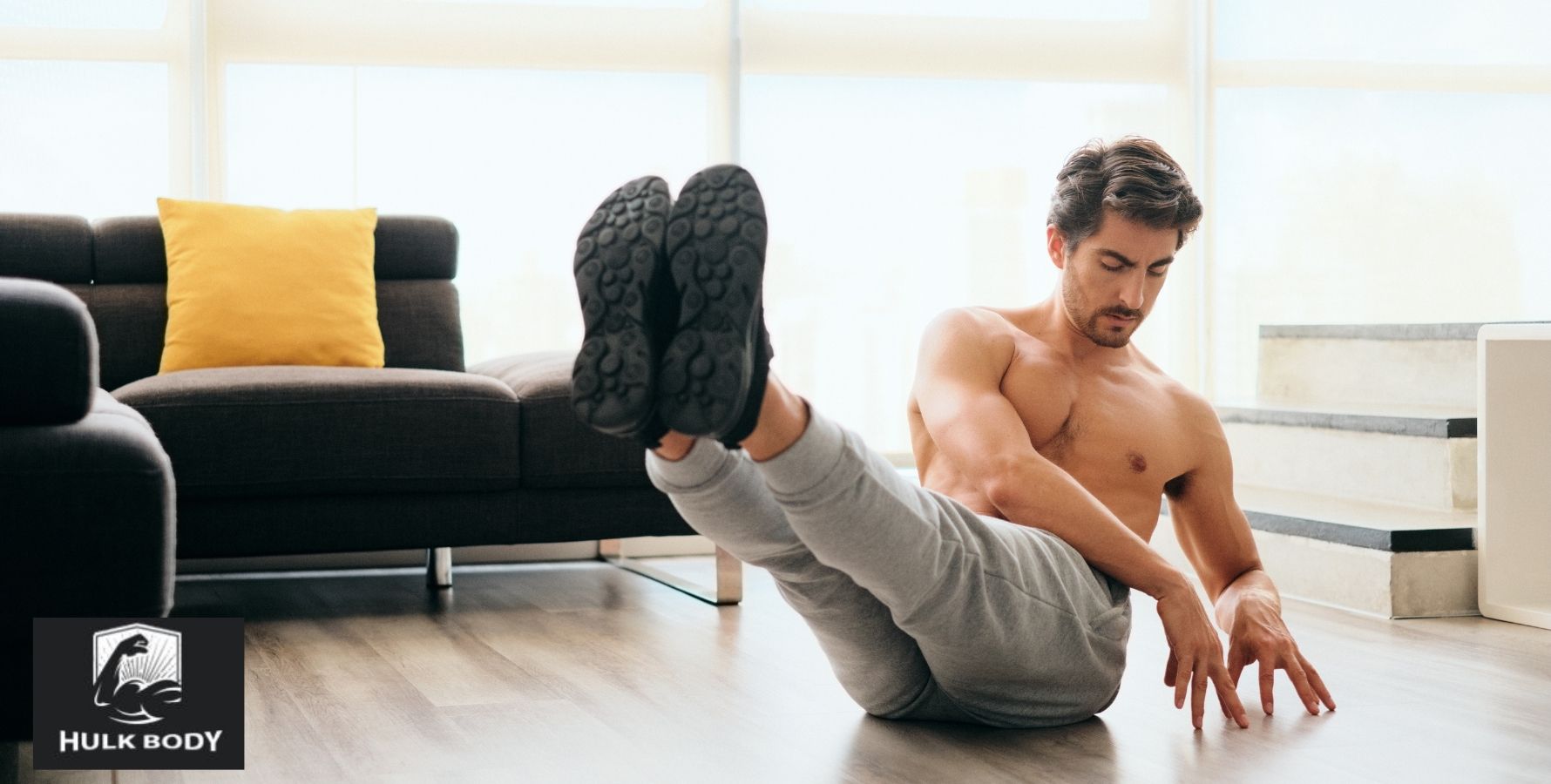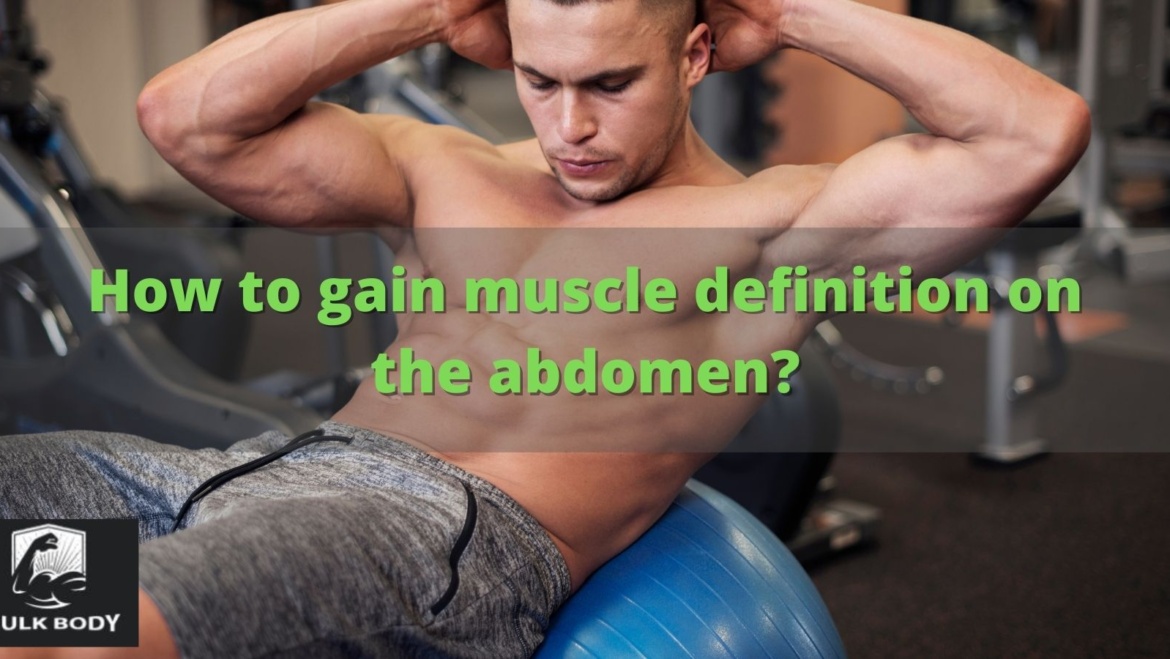How to gain muscle definition on the abdomen?
Today, when it is no longer fashionable to be just slim, most participants of a healthy lifestyle are fighting for visible definition. If regular lunges and squats at home quickly give good results, then abdominal workouts usually move at a very slow pace. And often, even after six months of training, the athlete does not gain the desired result. Due to this, many people are beginning to seriously worry about the question of how to pump up the lower part of the abdomen at home and not to mention gaining defined abs.
It is especially difficult to work out the lower part of the abdomen, which does not want to part with the last 2 centimeters of fat on top of the muscles, even at the moment when the muscles are already perfectly defined.
So, how do we pump up the lower part of the abdomen and remove this excess layer of fat? It is possible to cope with this problem only through an integrated approach which is, competent training on the abs, with active exercises that promote weight loss along with a strict diet. This is the menu for weight loss.
The principle of the abdominal muscle growth
By “abs” many people understand this as those very aspirational cubes, or rather the rectus abdominis muscle. It is, of course, really responsible for the defined geometry of the abdomen. However, the abdominal area also includes the transverse abdominal muscle (internal, located under the lower part of the straight line) and the oblique muscles (internal and external).
Most bodybuilders know that there are no” upper “or” lower ” abs, as these are single rectus abdominis muscles. But their parts can really work in isolation. So, when lifting the shoulder blades, a part of up to 3 vertebrae works in dynamics, and after it in statics. When pulling up the legs on the contrary, there are exercises in which the bottom is practically not involved, while the top and middle move at the limit. Therefore, it is often the upper part that is much more developed than the lower part.
But to gain the perfect result in the lower abdomen, you need to work comprehensively, methodically while pumping all of the abdominal areas.
Therefore, there is no clear answer to the question “how to quickly pump the abs at home”. It takes time, patience and perseverance to achieve the desired definition. Fortunately, almost no sports equipment is needed for pumping the abs, and all exercises are available at home. With the new found use of sports pharmacology, many athletes report that they have gained fast and effective results with the use of training aid supplements within their workouts.
How to gain a defined abdomen?
Many people have known how to complete simple exercises for the lower abdomen since school, for example, lifting the legs. However, after a month of daily pumping, they get zero results. What is the reason for this? Perhaps some nuances were not observed. So, how to pump up the lower abdomen at home? Here are the recommendations and exercises, following with which, you can gain the long-awaited defined abdomen.
- To gain definition in the lower abdomen, it is necessary to include all the muscles of the abs in the work during training, even if the upper zone and obliques are in first-class shape.
Many athletes use Growth Hormone in order to burn away the unwanted fat in both the upper and lower regions of the abdomen. This substance will also change the way in which the body stores fat, help to promote lean muscle mass gain and also support and strengthen the body’s own functioning while reducing the muscle’s recovery times. You can find this amazing substance along with many more via our online sports pharmacology store with more details on their uses and many great benefits.
* The abs do not like fast movements and an exhausting number of repetitions in one set. Even if you are working not only to gain muscle mass, but also to get rid of the fat layer, you should not go for 55 repetitions in one set. Instead, take your time, work at an average pace and increase the loads by adding weights.
To gain better endurance within these abdominal workouts, many athletes use Clenbuterol in order to enhance their endurance and fat burring properties.
* Keep the tension in the muscles until the end of the approach, do not lower the shoulder blades to the floor, do not rise too high (above the angle of 45 degrees). Operate at the point of maximum tension within the movement at all times.
* Those who want to get rid of the fat layer and gain definition, it is worth stretching after each approach. If the goal is volume, then it is better to leave the stretching until the end of the entire training session.
To gain lean muscle definition, often cutting agents are used to promote fat loss with lean and defined muscle gain. The most widely used are Anavar, Sustanon 350 or Winstrol. These substances will promote enhanced definition within just a few weeks.
* Interval training is ideal for working out the abs (muscle growth and getting rid of the fat layer) – alternating statics and dynamics. Those who suffer from a lack of weight and only want to gain weight, it is better to abandon dynamic exercises, while focusing on slow, viscous and isometric options instead.
- To get rid of the extra layer on the stomach, you will have to reduce the % of fat in the whole body. It will not work to remove fat only in one zone. Therefore, working on defined abs is not only bending, twisting and planks, but also long, but not fast runs.
For this weight loss to take place, many athletes use T3 in order to decrease their body fat percentage. By increasing the speed of the metabolism, T3 is very effective at burning fat even with a calorie deficit diet, or a sloppy diet. Within just two months, a user can lose large amounts of unwanted body fat.
During all exercises, exhale at the end of the movement or in the highest position.
* Train your abs 2-3 times a week and in your free time, constantly keep your stomach “drawn in”, strain your abs even when you watch a movie.
- To better work out a certain muscle, you can use the principle of antagonists, paying attention to the opposite muscles during training. In this case, pay attention to the back from below, remembering the exercise – the “boat”.
* You can adjust your nutrition by applying a separate nutrition for weight loss.
Exercises for working out the lower part of the abdomen
To work out specifically the lower part of the abdominal area, in addition to the traditional twists on the upper zone and slopes that stretch the braids of the muscles, add the following exercises to the program.
Classic plank
Lying on your stomach, feet shoulder-width apart, emphasis on the toes.
Action: Position yourself on the elbows (elbow joints under the shoulder joints), raise the body in one straight line, strain the abs, buttocks and lower back, but do not bend or round off the lower back. We hold this position for as long as possible from 1 to 1.5 minutes. 2 sets in a row with a break of 30 seconds are enough. Or you can do 3-4 sets during the workout, periodically getting up to the plank between exercises for other muscle groups.
Plank with outstretched arms
Plank on the hands.
Action: Pull up the knees in turn to the chest 50 times, at the end we hold the plank pose for 15-30 seconds and this is performed for 2 sets.
Action: Pull up the knees in turn in the direction of the opposite shoulder 50 times, at the end we hold the plank pose for 15-30 seconds and this is performed for 2 sets.
Action: We lift the straight legs up in turn, clamping the buttocks, without relaxing the abs for 30 times. You can just keep your leg on the weight – for 30 seconds each, and this is performed for 2 sets.
Side plank
This exercise has a positive effect on the growth of the oblique abdominal muscles, so those who do not want to expand their waist area, it is better to abandon this exercise.
Side plank: We lie down on our side, stretch ourselves in one straight line, the support is on the elbow joint and the foot (one lies on top of the other).
Action: We lift the body up, leaning on the foot and the elbow joint, we stand from 1 to 1.5 minutes.
Action: Spring up 25 times. 2 sets on each side is needed within this exercise.
Plank on the knees
Here, we support on the palms and knees, which are located on the same line; palms under the shoulder joints, knees under the buttocks, legs slightly wider than the shoulder width and the back straight, as we do not span or arch the back.
Action: We lift our knees off the floor by a few centimeters, strain the abs, hold the position from 1 to 1.5 minutes, complete 2 working sets.
Pulling the legs up to the chest (or reverse twists): Dynamics + spring at the top (straight muscles)
Lying down, legs bent, knees pressed to the stomach, heels pulled to the buttocks, without stretching the legs. You can squeeze an object between your thigh and shin and hold it. For the growth of muscle mass, it is good to put weights on your legs. Hands behind the head or to the sides (for beginners).
Action: On exhalation, we pull the knees up to the chest, bending the spine from below, straining the muscles of the abs for 35-55 repetitions as the possibilities increase or depending on the additional weight. At the end, stay at the top or spring for half a minute. 2 working sets are performed.
V-turns
Sitting on the mat, lift your straight legs to a 45-degree angle, bend the body back, stretch your arms in the direction of the feet (fold).
Action: Holding the body, twist to the right and left in turn, 25 times in each direction in needed for one set, 2 working sets are required.
Bicycle
Lying on your back, raise your straight legs to an angle of 90 degrees to the body, bend them into a right angle hip-shin, hands behind your head, lift your shoulder blades from the floor, clamping the muscles of the abs.
Action: On exhalation, twist to the left, stretching your right leg above the floor, then do the same to the right for 25 times in each direction. 2 working sets are required.
Lifting the legs lying on the side (straight + oblique muscles)
Lying on side, the upper arm behind the head, the lower one is a support (forearm), the legs are off the floor by several centimeters.
Action: On exhalation, sharply lift your legs up as much as possible, hold them in this position for 1-2 seconds and perform 25 times on each side. 2 working sets are required.
Pushing straight feet clearly up
Lying on the back, straight legs raised up at an angle of 90 degrees to the body, toes pulled over yourself, hands behind your head or to the sides (for beginners)
Action: On exhalation, push your legs clearly towards the ceiling, there should be no movement yourself, only up (you can put a book or other object on your feet). At first, it may be possible to push yourself out only by 1-1.5 cm, but after a few workouts, the movements will become larger, perform 45-55 reps for as far as possible. 2 working sets are required.

Pain during doing abdominal exercises
Ab exercises for many are not the most difficult in their program. However, sometimes the simplicity hides the details of the technique, without which, it is impossible to gain the desired result.
When performing exercises on the abs, watch the position of the lower back. Being the opposite zone of the abdominal area, it sometimes takes a “kick” on itself. At the same time, you will “kill” your back, and you don’t work out your intended stomach area.
During the exercises lying down, always press the lower back to the floor, press it into the mat with the muscles of the abdomen.
The same applies to the “plank” exercise – do not sink or bend your back.
How to dry?
Often, the muscles of the abs pump up, but remain under a small layer of fat mass, so the cubes are no visible. To “expose” the results of your physical labors, you will have to work a little more, adding:
* Cardio exercises that involve all the muscles,
* A good diet to support “drying”.
Cardio training means 45-60-minute activities, possibly interval training, combining static and dynamic exercises together. You can create your own program by supplementing most of the static exercises on the abs with an active program for other muscle groups.
For example:
* Legs (lunges, plies, etc.) – 1 set;
* Abs (obliques) – 2 sets;
* Buttocks (squats, pelvic lift) – 1 set;
* Abs (rectus muscle-from above) – 2 sets;
* Arms (reverse push-ups) – 1 set;
* Abs (rectus muscle-from below) – 2 sets;
* Back (boat) – 1 set;
* Abs (transverse muscle) – 2 sets.
Effective for “drying” is a 45-minute run at an average pace, which greatly contributes to the” falling off ” of the fatty mass around the abdomen.
As for nutrition, it is necessary to:
* Exclude fatty foods, sweet and flour;
* Cereals should be consumed in the first half of the day, necessarily 2 hours before training;
* Eat 1.5-2 hours before and after training;
* Give preference to low-fat meat and cottage cheese, fish, eggs, seafood, fresh vegetables and protein supplements such as casein.
Now you have learned how to decrease the fatty mass and increase the lean muscle definition, it’s time to put the theory into practice! Select the correct exercises for your workouts, the correct training aids for your goals and outcomes, and the correct diet to match your training style. Once you have built the perfect program for you, your body and your desired outcomes, those defined abdomen muscles will be just a few training sessions away!














